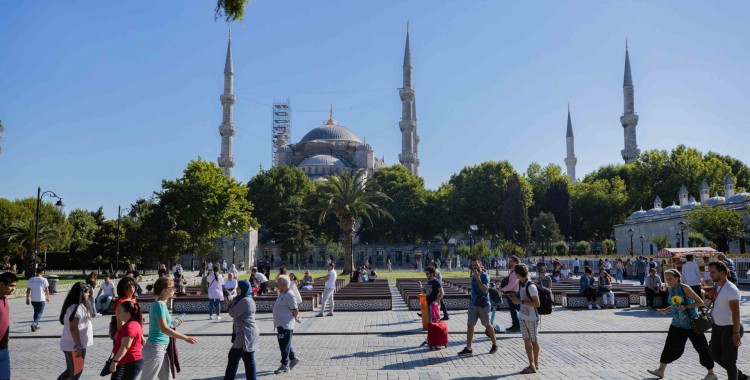Istanbul Walking Route (Sultanahmet)

Istanbul Walking Route (Sultanahmet)
Sultanahmet Urban Archaeological Site, the most important location of the Historical Peninsula, which was included in the UNESCO World Heritage List in 1985, can be considered as an important cultural and walking route for those who want to discover the historical riches of Istanbul.
On this walking route, you can see the ruins of historical artifacts, visit mosques and museums; You can try street delicacies such as corn and chestnuts; You can shop for souvenirs at the bazaars.
On the walking route starting from Sultanahmet tram station, you can first visit the "Binbirdirek Cistern", which is considered the second largest water cistern in Istanbul after the Basilica Cistern.
After the cistern tour, turn left and pass through Mehmet Akif Ersoy Park, which has dining and seating areas, and where the hippodrome, the open-air stadium of the Byzantine period, is located; You can reach the area called "Horse Square" during the Ottoman period and Sultanahmet Square today.
In Sultanahmet Square, respectively, German Emperor II. When you move towards the middle of the square, you can see the German Fountain, which was Wilhelm's gift to Istanbul and was placed in its current location in 1901, BC. In 1450, Pharaoh III. You can see the Obelisk (Theodosian Column), which was built in memory of Thutmosis and brought to Istanbul in 390 by the order of Emperor Theodosius. On the right side of the obelisk, you can visit the Museum of Turkish and Islamic Arts, which is among the most important museums of Islamic art in terms of the works it contains.
After visiting the museum, we continue walking from the square and visit B.C. It was built in memory of the war in which the Greek city-states united and defeated the Persians in 478; You can see the Serpent Column (Burma Column), which was erected in front of the Temple of Apollo in Delphi and brought to Istanbul by Emperor Constantine in the 330s.
A little ahead of the Serpent Column, you can see the Knitted Obelisk and take a photo of it. You can visit the Marmara University Republic Museum and Art Gallery, located at the end of Sultanahmet Square, beyond the Obelisk.
After visiting the museum, when you follow the road to the right, you can see the Eastern Roman Period; M.S. You can explore the Great Palace Mosaics Museum, where mosaics dating back to 450-550 are exhibited.
The exit of the museum directs you to Arasta Bazaar, where there are shops selling various souvenirs. When you go to the left from the museum exit, you can exit the market and take a break at the cafes here.
The path you walk left from the end of the bazaar will take you to Hagia Sophia Square. In the square, you can first visit the Tomb of Sultan Ahmed I, which is located right in front of the Blue Mosque, diagonally opposite the German Fountain.
Then, you can visit the Sultanahmet Mosque, known as the Blue Mosque abroad, which was built by the Architect Sedefkâr Mehmet Ağa upon the request of Sultan Ahmet I, and is the first sultan mosque.
After leaving the mosque, you can watch the water shows in the pool in the middle of the square and take photos; You can buy and eat corn from the mobile stalls and relax on the benches. Before entering Hagia Sophia, located at the end of the square, you can see the Haseki Hürrem Sultan Fountain and the Hürrem Sultan Bath.
You can end the walking route by exploring Hagia Sophia, which is considered one of the most important architectural structures in the world and includes the Tomb of the Princes in its garden.
If you would like to hire an experienced local guide to accompany you on this walk, you can contact us.
info@istanbulshuttle.com
+90 530 580 2807